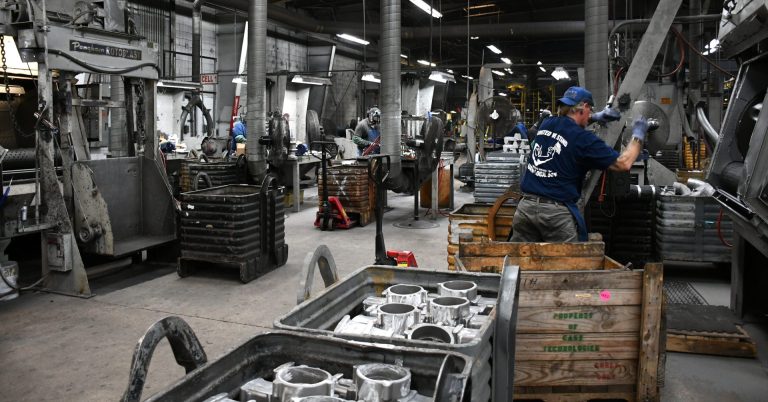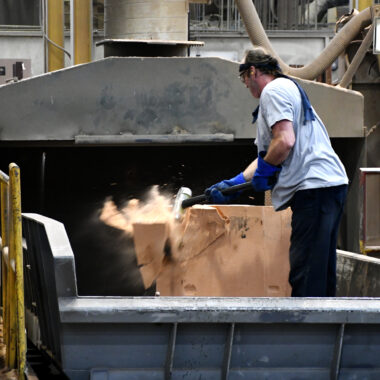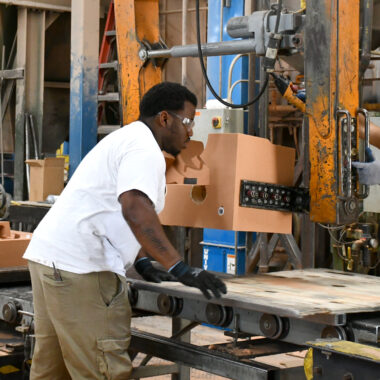Crafting Perfection: Exactly How to Achieve High-Quality Aluminum Castings Every Single Time
In the realm of light weight aluminum casting, the search of perfection is a continuous trip that requires a careful method and a keen understanding of the ins and outs included. Achieving regular high-quality light weight aluminum spreadings requires a comprehensive grasp of the processes, from picking the proper alloy to executing specific mold and mildew designs and thoroughly regulating casting criteria. The real proficiency lies in the capability to carry out these aspects effortlessly to develop remarkable castings every time. As we discover the ins and outs of crafting perfection in light weight aluminum spreadings, uncovering the vital approaches and methods that lead to impeccable outcomes comes to be paramount for those aiming for excellence in this customized field.
Recognizing Light Weight Aluminum Spreading Procedures
Aluminum casting procedures, crucial in the manufacturing industry, entail the elaborate improvement of molten light weight aluminum right into solid types with a collection of very carefully controlled steps. Understanding these processes is paramount to attaining top quality aluminum castings regularly - about aluminum casting. The main methods made use of in aluminum spreading are die casting, sand spreading, and investment spreading

Each of these processes has its benefits and is picked based upon factors like complexity, quantity, and wanted coating of the light weight aluminum casting. about aluminum casting. Recognizing the intricacies of these techniques is crucial for suppliers intending to generate top quality light weight aluminum spreadings consistently
Picking the Right Aluminum Alloy
Choosing the appropriate light weight aluminum alloy is a crucial decision in the manufacturing of premium aluminum spreadings. The choice of alloy considerably influences the buildings and qualities of the end product. Different aluminum alloys provide varying levels of stamina, deterioration resistance, machinability, and thermal conductivity. When choosing a light weight aluminum alloy for spreading, it is necessary to think about the certain demands of the application to make sure ideal efficiency.
One of the most typically utilized light weight aluminum alloys for casting is A356. This alloy supplies excellent castability, high strength, and good rust resistance, making it ideal for a large range of applications. Additionally, 6061 aluminum alloy is preferred for its exceptional weldability and excellent mechanical homes. For applications requiring high stamina, 7075 light weight aluminum alloy is a prominent option because of its exceptional strength-to-weight ratio.
Along with mechanical properties, considerations such as cost, availability, and post-casting processes must likewise influence the selection of the ideal aluminum alloy. By carefully examining these aspects, suppliers can make sure the production of high-grade light weight aluminum spreadings that fulfill the preferred specifications.
Executing Correct Mold Style
Creating a reliable mold design is essential for guaranteeing the successful production of high-quality light weight aluminum castings. Correct mold and mildew design plays a significant role in accomplishing the preferred qualities of the last item. To execute a successful mold style, variables such as material circulation, cooling rates, and component geometry have to be meticulously considered.
One secret aspect of mold design is making sure proper dental filling and solidification of the aluminum within the mold cavity. This involves making jogger and gating systems that go to this website help with smooth metal flow and protect against problems such as air entrapment or incomplete dental filling. Furthermore, including air conditioning channels right into the mold and mildew style aids regulate solidification prices and decrease the threat of porosity or shrinkage defects.

Controlling Casting Parameters

Guaranteeing Post-Casting High Quality Checks
To keep the high top quality of aluminum castings, comprehensive post-casting top quality checks are crucial. After the spreading process is finished, it is vital to guarantee that the final items fulfill the wanted standards and specs.
Dimensional precision is an additional essential aspect that should be confirmed throughout post-casting top quality checks. Dimensions of vital dimensions and tolerances should be required to confirm that the castings satisfy the called for specifications. Furthermore, mechanical residential or commercial properties such as firmness, tensile strength, and effect resistance may require to be reviewed via material testing to ensure that go now the spreadings possess the required stamina and durability for their designated application.
Verdict
To conclude, achieving top quality light weight aluminum spreadings requires a detailed understanding of the casting processes, selecting the appropriate alloy, designing mold and mildews successfully, regulating spreading criteria meticulously, and conducting post-casting top quality checks faithfully. By complying with these actions, producers can regularly produce light weight aluminum castings that satisfy the greatest standards of high quality and performance.
Achieving regular high-quality light weight aluminum castings requires a detailed understanding of the procedures, from selecting the ideal alloy to carrying out specific mold styles and thoroughly managing spreading criteria. The key methods made use of in light weight aluminum spreading are pass away casting, sand casting, and investment casting.
Investment casting, also recognized as accuracy casting, involves developing wax patterns that are coated in ceramic to create mold and mildews.Selecting the proper aluminum alloy is a vital decision in the manufacturing of top quality light weight aluminum castings.Making certain specific control over casting criteria is vital for maintaining uniformity and top quality in aluminum casting production.
Comments on “Checking out the Craft: All About Aluminum Casting Techniques”